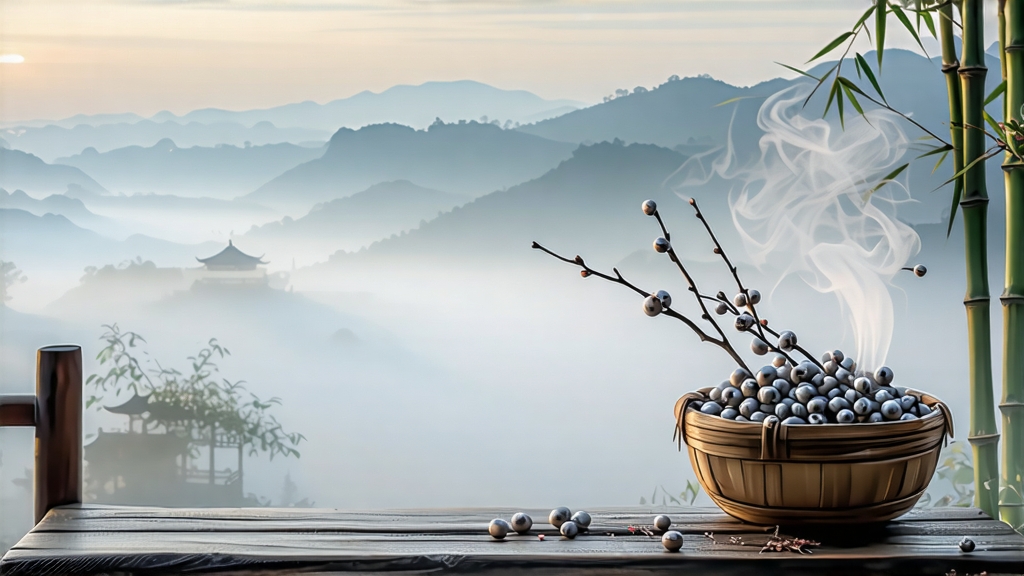
Among the six major families of Chinese tea, white tea is the least theatrical yet the most elusive, and within that quiet clan Silver Needle—Bai Hao Yin Zhen—occupies the highest throne. International drinkers often meet white tea through bagged blends, but the original Silver Needle remains a guarded secret of Fujian’s coastal hills, where sea fog meets mountain cloud. To understand China’s tea imagination, one must listen to the whisper of this single bud.
Historical mist
The first written record appears in 1796, when the Qing court requested “white down tea” as tribute from Fuding county. Locals insist, however, that monks on Taimu Mountain were air-drying buds during the Song dynasty, a full eight centuries earlier. Caravans later carried the compressed cakes to Southeast Asia, where Chinese medicine shops prescribed it for “clearing heat.” When the British East India Company catalogued Chinese teas in 1850, Silver Needle was priced higher than Keemun, yet only seven chests were available. Its scarcity turned the bud into legend; even today, annual production seldom exceeds 250 metric tons.
Micro-terroir
Authentic Silver Needle is born inside a 50-km radius where red granite soil, 1,200 mm annual rainfall, and diurnal sea breezes create a natural greenhouse. Two cultivars dominate: Fuding Da Bai (“Big White”) and Zhenghe Da Bai, each carrying more soluble amino acids than any other tea bush. The buds swell in late March, fat as quills, cloaked in a velvet that reflects light like frost. Farmers time the plucking to Daoist calendrical markers: three days before Qingming festival, when the sap rises yet chill nights still lock in sweetness.
Craft without fire
Unlike green tea that is pan-fired or oolong that is tossed, Silver Needle is coaxed rather than cooked. The classic sequence—pick, wither, sun, rest—sounds simple, yet every hour is a negotiation with humidity. At dawn, pickers snap off the unopened bud with a fingernail’s click, dropping it into bamboo creels lined with banana leaf. Within two hours the buds are spread on water-reed trays, 2 cm thick, and placed under a translucent canopy that filters sunlight to a soft 18,000 lux. For the next 36–48 hours, masters shuffle the trays every twenty minutes, allowing each bud to kiss the breeze evenly. When moisture drops to 10 %, the tea is given a final “sunbath” on marble slabs for no longer than seven minutes; ultraviolet rays deactivate residual enzymes while preserving the silver hairs. No machine rolling, no high heat—only the patience of watching water leave the cell walls one molecule at a time.
Grades and misnomers
European vendors often label any large-leaf white tea as Silver Needle. Authentic lots are classified into three ascending tiers:
• Qingming Buds—plucked before April 5, needle length 2.5–3 cm, down visible to the naked eye.
• Pure Tip—hand-sorted to remove any leaf or stem, liquor the color of pale chardonnay.
• Imperial Tip—harvested at 5 a.m. when dew still clings, then withered in caves where temperature fluctuates less than 2 °C; fewer than 300 kg reach the market each year.
Sensory map
Dry aroma: steamed rice mixed with wet pebble. Wet leaf: honeydew and narcissus. Liquor: the first infusion tastes like water remembering a flower; by the third, it thickens into white peach and marzipan. The lingering aftertaste, called huigan in Chinese, arrives two minutes later, a cool menthol stream at the back of the throat. Gas-chromatography studies show 3.2 mg L-theanine per gram—double that of Darjeeling—explaining the serene alertness drinkers report.
Brewing rituals
Western cup: 3 g, 250 ml, 80 °C, 4 min. The leaf will stand vertically like miniature stalactites; wait until the majority sink before sipping.
Gongfu style: 5 g in a 120 ml porcelain gaiwan. Rinse with 75 °C water for five seconds to awaken the hairs. Subsequent steeps: 45 s, 50 s, 65 s, 90 s, 2 min, 3 min. Use mountain spring water with 30–50 ppm TDS; distilled water flattens the amino acids.
Cold brew: